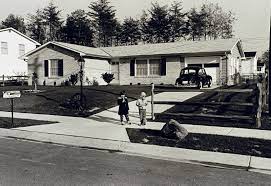INTRO TO REAL ESTATE INVESTING
Direct Capitalization Method: Income Approach to Valuation

Calculate the Value of an Income-Producing Property
Property Value:
The direct capitalization method is an approach for appraising a property's value based on the income it generates. Being able to quickly and accurately estimate the value of a property is a crucial skill for any real estate investor. And the fact that the direct capitalization approach is easy to calculate and use makes it a great technique to know.
Formula
You can use the direct capitalization method to calculate a property's value with the following formula:
First, calculate the annual net operating income of the subject property (explained below). Next, calculate the cap rate for comparable properties in the area (also explained in more depth below). Then divide the net operating income by the market cap rate to arrive at the estimated value for the subject property.
For example, a rental property with an annual NOI of $20,000 and a market cap rate of 6% would be valued as 20,000 / .06 = $333,333
To fully understand this formula let's examine each part in more detail.
Net operating income / Market cap rate = Value
First, calculate the annual net operating income of the subject property (explained below). Next, calculate the cap rate for comparable properties in the area (also explained in more depth below). Then divide the net operating income by the market cap rate to arrive at the estimated value for the subject property.
For example, a rental property with an annual NOI of $20,000 and a market cap rate of 6% would be valued as 20,000 / .06 = $333,333
To fully understand this formula let's examine each part in more detail.
How to Calculate Net Operating Income (NOI)
Gross Operating Income
- (Operating Expenses & Vacancy Losses)
______________________________
Net Operating Income
- (Operating Expenses & Vacancy Losses)
______________________________
Net Operating Income
To calculate net operating income, first determine the gross operating income for the property. Gross operating income is all the revenue the property generates. Gross operating income includes monthly rents, parking passes, laundry fees, and any other source of revenue.
Next, subtract all operating expenses, including any utilities, contractor services, and property taxes.
Gross operating income subtract operating expenses gives you your net operating income. Often you will need to do your own research to gather these figures for a subject property, but in some cases, the seller may provide these numbers for you. If these numbers are provided for you, it is still a good idea to do your own research and see if the numbers pass the smell check and seem reasonable. The last thing you want to do is make an investment decision based on incorrect data.
How to Calculate Cap Rates
To find the cap rate for a specific property, adjust the formula for direct capitalization to be as follows:
The cap rate used in the direct capitalization method formula is determined using sales data from similar properties; to come up with an average cap rate for the market. To get reliable results, you'll need enough comparable properties to represent the market accurately. Ideally, you will use comps from properties with similar vacancy rates to the subject property because vacancy rates heavily influence the estimated value of a property when using the direct cap approach.
Net operating income / Sales price = Cap rate
The cap rate used in the direct capitalization method formula is determined using sales data from similar properties; to come up with an average cap rate for the market. To get reliable results, you'll need enough comparable properties to represent the market accurately. Ideally, you will use comps from properties with similar vacancy rates to the subject property because vacancy rates heavily influence the estimated value of a property when using the direct cap approach.
Cap Rate Calculator
Cap Rate:
When to use the Direct Capitalization Method
The direct cap valuation method is useful for valuing income-generating properties like commercial buildings or rental properties. However, it is not applicable for non-cash-producing real estate such as owner-occupied residences or raw land.
Additionally, the direct cap method of valuing properties considers the current cash flow the income is producing but does not consider changing market conditions, year-over-year rent growth, or cost fluctuations. While this technique can be used to evaluate any income-producing property, it is best for properties with stable NOI and vacancy rates.
Additionally, the direct cap method of valuing properties considers the current cash flow the income is producing but does not consider changing market conditions, year-over-year rent growth, or cost fluctuations. While this technique can be used to evaluate any income-producing property, it is best for properties with stable NOI and vacancy rates.
Potential Issues
There are a few potential issues to watch out for when using this analysis that may make the results unreliable. First, net operating income is greatly affected by vacancy rates, and if the property experiences large swings in vacancy, results may be erratic. For example, if the property has a high vacancy rate when appraised but usually has a much lower vacancy rate, then the value may be underestimated. Alternatively, if the appraiser decides to use market vacancy rates, but the subject property has higher vacancy rates than average the estimated NOI will be artificially high and the property's value may be overestimated.
Another noteworthy thing to be mindful of is the direct capitalization method only considers the previous year's income and doesn't evaluate any future income growth. This means that if the property's NOI is expected to increase year-over-year, the direct cap valuation approach may underestimate the property's long-term value.
This technique is only reliable if there are enough sales comps in the area to estimate the market cap rate accurately. Without a reliable cap rate, the valuation may be unreliable.
These are a few challenges you may experience when attempting to appraise a property using the direct capitalization method. And as a result, it is recommended to use multiple valuation techniques when evaluating an investment opportunity rather than relying on a single approach. Different appraisal techniques can lend unique insights about the subject property and help you make a more informed decision.
Another noteworthy thing to be mindful of is the direct capitalization method only considers the previous year's income and doesn't evaluate any future income growth. This means that if the property's NOI is expected to increase year-over-year, the direct cap valuation approach may underestimate the property's long-term value.
This technique is only reliable if there are enough sales comps in the area to estimate the market cap rate accurately. Without a reliable cap rate, the valuation may be unreliable.
These are a few challenges you may experience when attempting to appraise a property using the direct capitalization method. And as a result, it is recommended to use multiple valuation techniques when evaluating an investment opportunity rather than relying on a single approach. Different appraisal techniques can lend unique insights about the subject property and help you make a more informed decision.


